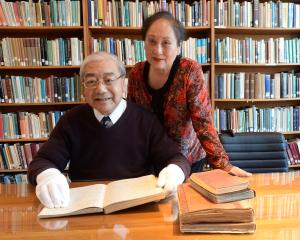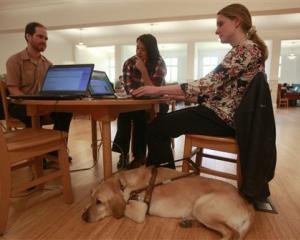A Hastings-born New Zealander, Dr France has a PhD in textile science from the University of Otago, and is a senior preservation scientist at the United States Library of Congress preservation directorate in Washington DC.
She was back at Otago University yesterday to give a keynote talk on "Preserving our heritage to inform our future" at the start of a three-day Consumer and Applied Science Centenary Conference.
Over the past decade, Dr France has worked mainly in the United States and has been involved in a variety of research and conservation projects.
These have included examination and preservation of the Magna Carta; as well as America's huge Star-Spangled Banner (1814), and artefacts from "ground zero", the World Trade Centre site in New York, now part of the World Trade Centre Archive.
In her role at the Library of Congress, where she has been based since 2007, she is developing research methods involving the library's "hyperspectral" imaging system, which also uses ultraviolet and infrared images which are not visible to the naked eye.
Using advanced imaging and digital storage techniques offered significant advantages by helping to "unravel the past" and recovering lost information, including lines once drawn on maps, but no longer readily visible.
And she has been researching anoxic (no oxygen) storage and exhibition environments for the library's "Top Treasures", such as the Waldseemuller 1507 Map, known as the first map to use the word "America"; as well as the handwritten draft of the Declaration of Independence (1776).
The Washington Post last year prominently featured some of her research, which had uncovered a previously obscured word in the draft declaration.
Dr France said in an interview that she felt privileged to be able to work on major heritage preservation projects.
Her earlier efforts in initially "stabilising" artefacts from the World Trade Centre site had included working with a 60-tonne steel column which had had many moving personal messages written on it.
She had always tried to remain objective about such preservation challenges but had also found herself shedding quite a few tears during the World Trade Centre work, she said.





